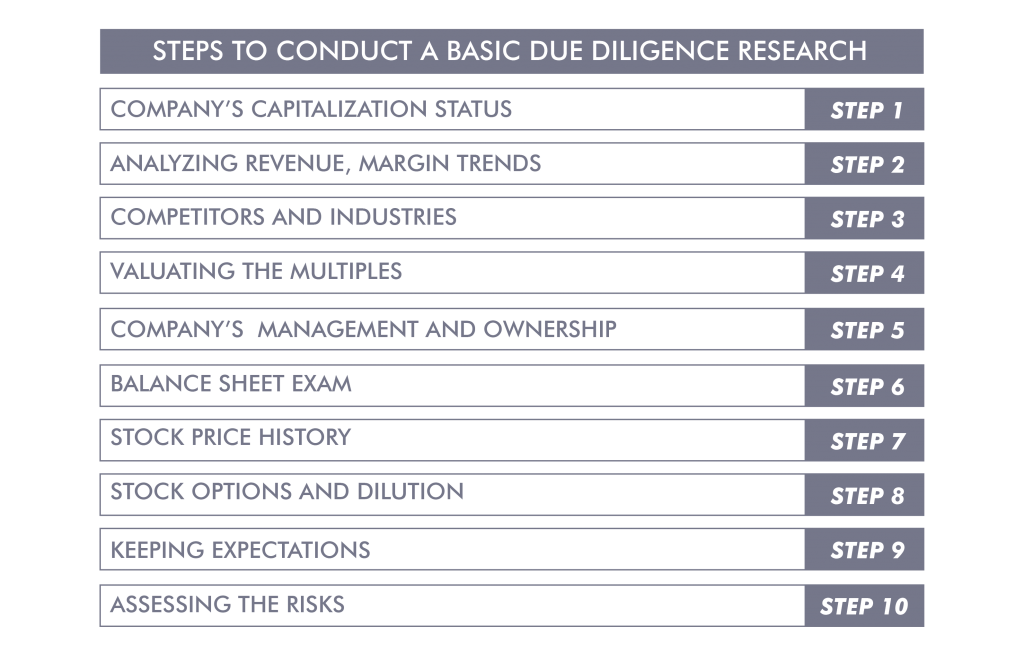Importance Of Risk Assessment For A Company
Due diligence is defined as the reviewing engagement service generally performed by investigating a business related to its market performance, assets, financial statement, liabilities, and other matters. Due diligence performed in these cases depends on the nature of engagement that a company is targeting.
Information while conducting due diligence is obtained mainly through various analytical procedures and inquiries. These queries are primarily used for this purpose and are generally performed when requested by the investors who seek to acquire the target companies. In most cases, the scope of these services is an advanced service. It considers the assets, liabilities, key players, and top management in the companies that demand potential investors who decide to acquire it. Due diligence also lists the purchase benefits and first identifies the targeted business’s value and the other essential points mentioned above.
Why Perform A Due Diligence Process
Here we are mentioning some undeniable potential advantages of due diligence. These advantages outweigh its disadvantages. When discussing mergers and acquisitions, they have a high failure rate, and most studies place them at high risk. The longer and deeper the courtship period is, it increases the chances of success and facilitates the informed decision-making process.
Due diligence allows an acquirer to identify and assess risks, business problems, and liabilities in the target company before finalizing any transaction or deal. This assessment avoids any losses, failures, and other bad press from the company later on as they find out whatever they can through extensive research. Once a business signs up with the company, there is no point in figuring out the working loopholes as it gets terrible as it gets late.
Steps To Conduct A Basic Due Diligence Research
To mention, there are ten essential steps a business should take on its first review of new stock. Performing this due diligence will allow it to gain crucial information and point out a possible new investment.

Step 1: Company’s Capitalization Status
The first step is to form a mental picture of the targeted company. The motive here is to look at the company’s market capitalization. This information shows how big the company is by calculating its outstanding shares’ total market value.
Step 2: Analyzing Revenue, Margin Trends
When one begins to look at the financial numbers related to the company, it is advisable to start with the trends in revenue, profit, and margin. A business looks after the gain and net income trends of a company.
Step 3: Competitors and Industries
Now that a company knows about the targeted company’s size and finances, it’s time to analyze its position in the industry that it operates in and its competitors. Its margins are compared with two or three competitors. Its competitors partially define every company.
Step 4: Valuating the Multiples
Step four is to get to the nitty-gritty details of performing due diligence on a stock. A business will review the price/earnings to growth (PEG) ratio for all the competitor companies you’re researching and its competitors.
Step 5: Company’s Management and Ownership
In this step of due diligence on a stock, the company wants to answer critical questions regarding its management and ownership. The company’s age is a significant factor as younger companies have more founding members. Business looks at the consolidated bios of top managers to see what broad experiences they have. This information is found on its website or in its Securities and Exchange Commission (SEC) filings.
Step 6: Balance Sheet Exam
In this step, review the company’s consolidated balance sheet for analyzing the overall level of assets and liabilities, pay attention to cash levels and its long-term debt. Massive debt is not necessarily a nasty factor and depends more on the business model than anything else.
Step 7: Stock Price History
At this point, the business wants to nail down just how long all classes of shares are trading and both short-term and long-term price initiatives by the company. This step outlines the kind of profit experience the stock owner has seen, affecting future stock movements.
Step 8: Stock Options and Dilution
Next, the business needs to dig into the 10-Q and 10-K reports. It needs quarterly SEC filings to show all outstanding stock options and the conversion expectations giving a range of future stock prices. This step helps to understand how the share count will change under different price scenarios.
Step 9: Keeping Expectations
This step is a sort of “catch-all” and requires some extra digging. The motive of this step is to find out what the consensus revenue and profit estimates are for the coming years, long-term trends that will affect the industry, and company-specific partnership details, joint ventures, IP, and new products and services.
Step 10: Assessing the Risks
This last step of risk assessment is vital in the due diligence process. It makes sure that the business always emphasizes the risks inherent in investing. It is necessary to understand both industry-wide risks and company-specific ones. Investors should keep a healthy devil’s advocate mindset at all times, picturing the worst-case scenarios and their potential outcomes.
Once the business has completed these steps, it should evaluate its future profit potential and how stocks might fit into your portfolio strategy. Inevitably, one will have specifics to research further. Companies like Ingenious conduct all these steps for your firm, providing you with an affirmation about your future partner.

